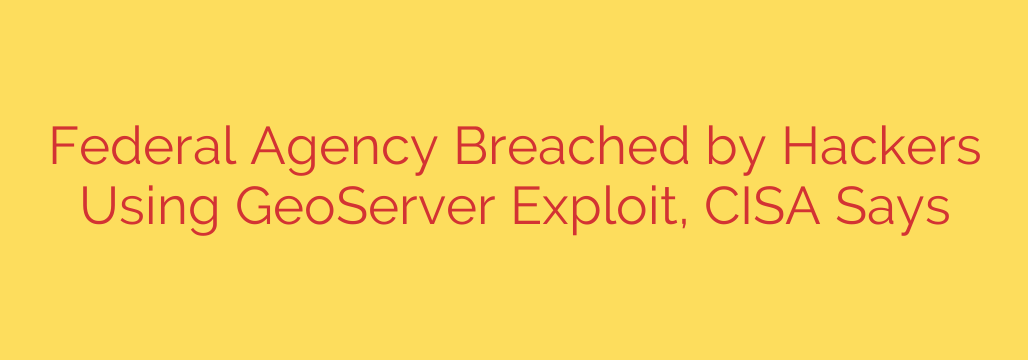
Critical GeoServer Vulnerability Leads to Federal Agency Breach: CISA Issues Urgent Warning
In a stark reminder of the persistent threats facing government infrastructure, a federal agency was recently compromised by hackers who exploited a known vulnerability in a widely used open-source server. The Cybersecurity and Infrastructure Security Agency (CISA) has since released a detailed advisory, urging organizations to take immediate action to prevent similar attacks.
The incident highlights the critical importance of timely patch management, as the attackers leveraged a flaw that already had a fix available. This breach serves as a crucial case study for both public and private sector entities on how unpatched software can open the door to sophisticated cyberattacks.
How the Attack Unfolded
According to CISA’s analysis, the threat actors gained their initial foothold by exploiting CVE-2023-25157, a critical command injection vulnerability in GeoServer. GeoServer is a popular open-source software server used for sharing and editing geospatial data, making it a common component in many IT environments.
Once inside the agency’s network, the attackers executed a series of calculated steps to expand their access and establish a long-term presence:
- Initial Access: The hackers used the GeoServer vulnerability to execute malicious code, giving them an initial entry point.
- Establishing Persistence: To ensure they could regain access later, the attackers created a new user account on the compromised web server. This is a classic technique used to maintain control even if the original vulnerability is patched.
- Lateral Movement: The threat actors were not content with just one server. They used their initial access to move laterally across the network, exploring other systems and seeking valuable data. They were observed using common reconnaissance tools to map out the network architecture.
- Attempted Data Exfiltration: The ultimate goal of the intrusion appeared to be data theft. CISA observed the hackers attempting to steal data by compressing it and moving it to a staging location for exfiltration.
The breach was first detected when the agency noticed anomalous activity on its network, prompting an incident response engagement with CISA.
Urgent Security Measures to Mitigate the GeoServer Threat
The methods used in this attack were not novel, relying on a known vulnerability and standard attacker techniques. This means that a strong defensive posture and basic cybersecurity hygiene can be highly effective in preventing similar incidents. Based on the findings, CISA recommends that all organizations, especially those using GeoServer, implement the following security measures immediately.
1. Patch Vulnerable Systems Immediately
The most critical step is to update any vulnerable GeoServer instances to a patched version. Proactive vulnerability management is the first line of defense against attacks that exploit known flaws. Regularly scanning for and remediating vulnerabilities should be a top priority for any security program.
2. Implement Robust Network Segmentation
The attackers were able to move from the initial point of compromise to other parts of the network. Proper network segmentation can contain a breach to a small area, preventing threat actors from accessing critical systems and data. Restrict communication between servers to only what is absolutely necessary for business operations.
3. Strengthen Identity and Access Controls
Creating a new user account was a key part of the attackers’ strategy. To counter this, organizations must enforce strong password policies and mandate multi-factor authentication (MFA) wherever possible, especially for administrator accounts. Regularly audit user accounts to identify and disable any that are dormant or unauthorized.
4. Maintain Comprehensive Logging and Monitoring
Detecting the breach was possible because the agency identified unusual activity. Ensure that security and event logs are enabled, collected, and regularly reviewed. This data is invaluable for detecting suspicious behavior early and for conducting forensic analysis after an incident is discovered.
This federal breach is a clear signal that even sophisticated organizations are at risk if foundational security practices are overlooked. By prioritizing patching, segmenting networks, and enforcing strict access controls, organizations can significantly reduce their attack surface and protect themselves from opportunistic threat actors.
Source: https://www.bleepingcomputer.com/news/security/cisa-says-hackers-breached-federal-agency-using-geoserver-exploit/








